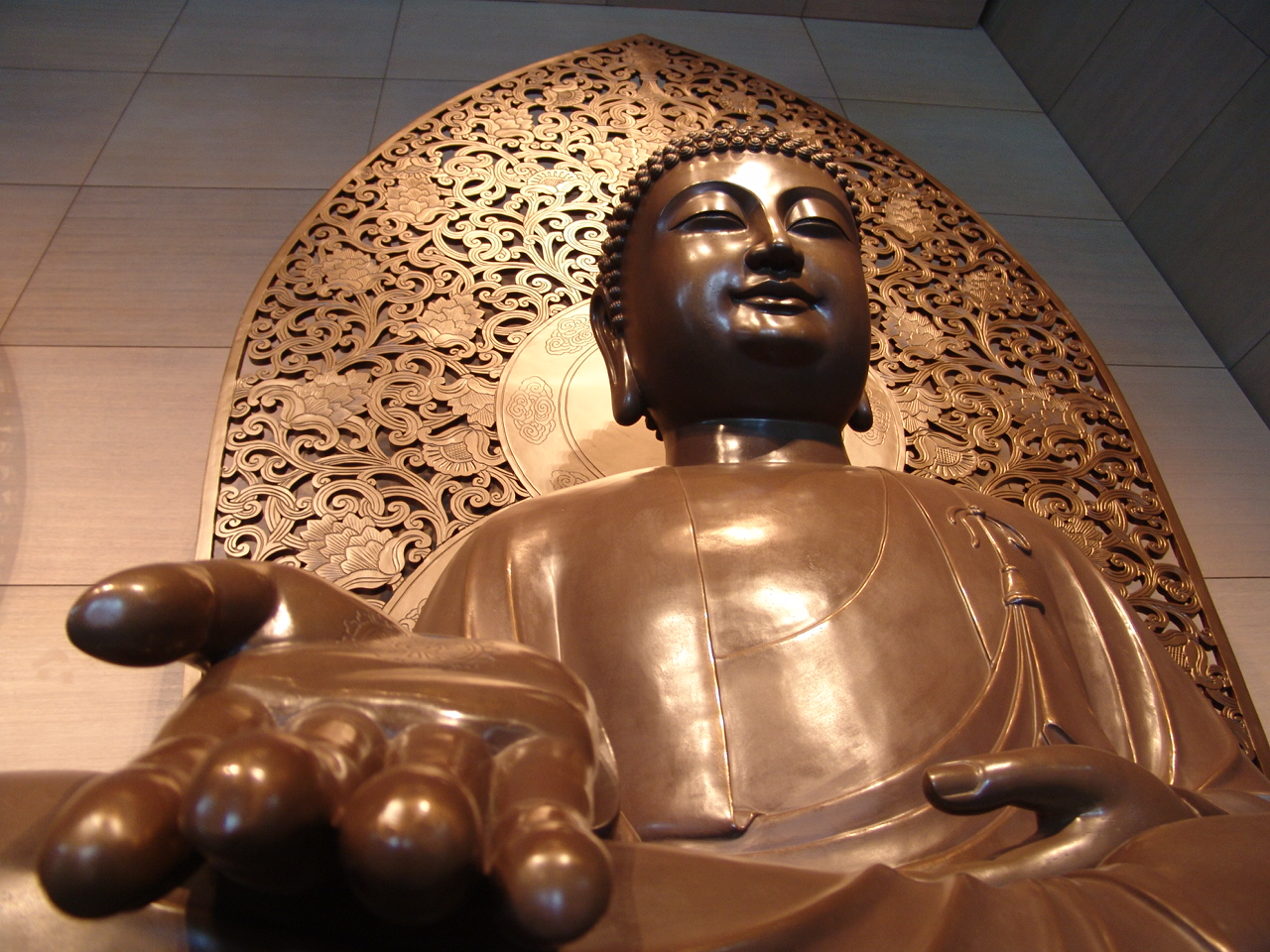Special Topics
Three Saints of the Eastern Pure Land
An introduction to combinations of Buddhist statues – one buddha flanked by two bodhisattvasThree Saints of the Eastern Pure Land and their approaches to gain peace and joy in the present life
At a distance of lands as numerous as the sands of ten Ganges rivers from the east of the Sahā World, lies the Eastern Pure Land of Azure Radiance (Vaidūryanirbhāsā). It is a pure Buddha-land created as a result of Bhaiṣajyaguru Tathagata (Medicine Buddha)'s twelve great vows. In Medicine Buddha Sutra (Bhaiṣajyaguru-vaiḍūryaprabha-rāja Sūtra), Sakyamuni Buddha told Manjushri Bodhisattva that Medicine Buddha's first great vow is to illuminate the infinite and boundless worlds with brilliant light, thereby guiding all sentient beings towards enlightenment. His second great vow promised to emerge from the east, his crystal-clear form radiating a fiery glow, to assist inhabitants of the netherworld to achieve supreme enlightenment. Flanking the Medicine Buddha are two pivotal figures–Sunlight Bodhisattva and Moonlight Bodhisattva–who support the Medicine Buddha in spreading his teachings. Together, they are revered as the "Three Saints of the Eastern Pure Land", or the "Triad of Medicine Buddha."
The approaches of the Medicine Buddha prevail in Japan and Tibet. In addition to bringing various benefits, including health, longevity, warding off calamities, and material prosperity, more importantly, Medicine Buddha's great vows also help all sentient beings to cultivate wisdom by guiding them to forsake evil and cultivate virtues. Without waiting until the next life, the approaches of the Medicine Buddha offer tangible benefits in the present life through practices such as chanting the name of Medicine Buddha, reciting mantras, and making offerings.
Sakyamuni Buddha's recounting of the virtues of Medicine Buddha explains the causes and conditions for sentient beings to create evil karma, whereas Medicine Buddha's twelve great vows are the remedies for sentient beings to be free from suffering and attain happiness. Achieving ultimate liberation requires more than just the support of Medicine Buddha's vows; one must repent of any wrongdoings, adhere to the Dharma, observe the precepts, and cultivate virtuous karma.
Medicine Buddha (Bhaiṣajyaguru)

Based on liturgy pertinent to teachings of Medicine Buddha, statues of Medicine Buddha often depict him with a mortar for medicine preparation, herbal medicine balls, or other medicinal tools in his hand, thus symbolizing his commitment to heal and deliver all sentient beings by giving teachings as medicine. The Medicine Buddha Sutra narrates how the Twelve Great Yakṣa Generals, inspired by his teachings, vowed to take refuge in the Three Jewels, and each led 7,000 Yakṣas to ceaselessly protect those who practice the teachings of Medicine Buddha. Thus, representations of Medicine Buddha are sometimes accompanied by Twelve Great Yakṣa Generals.
Sunlight Bodhisattva (Sūryaprabha)
The two flanking bodhisattvas of Medicine Buddha, Sunlight Bodhisattva (Sūryaprabha) and Moonlight Bodhisattva (Candraprabha), hold a place of honor among the many bodhisattvas in Eastern Pure Land of Azure Radiance. Following Medicine Buddha's nirvana, he will take his place. The name "Sūryaprabha" signifies wisdom, and his statues often feature a sun wheel in his hand. This sun wheel symbolizes the illuminating power of his wisdom, which is bright enough to illuminate all lands, dispel ignorance, and enlighten all beings.
Moonlight Bodhisattva (Candraprabha)
In Buddhist scriptures, the fresh moonlight symbolizes compassion. According to the Moonlight Bodhisattva Sutra (佛說月光菩薩經), when Moonlight Bodhisattva practiced selfless acts of generosity in his previous lives, he was willing to sacrifice his life for the benefit of all beings in order to "make those who have not yet accepted the teachings be transformed, those who have already accepted the teachings attain liberation, and those who have attained liberation to fully actualize nirvana and ultimately reach the other shore." His compassion moved all Buddhas of the ten directions. Statues of Moonlight Bodhisattva typically hold a moon wheel, representing the compassionate light that guides sentient beings towards liberation and ultimate wisdom.
Related articles:
Buddhas and Bodhisattvas in the Pure Lands
The Triad of Sakyamuni Buddha
Three Saints of the Ghanavyūha
Three Saints of the Western Pure Land
Three Saints of the Eastern Pure Land
Buddhas of the Three Times
One Buddha Flanked by Two Disciples
Resource: Issue 402 of Humanity Magazine, Dharma Drum Publishing Corporation
Translation: Sinag-ling Li (李祥苓)
Editing: Keith Brown, 麗萍
